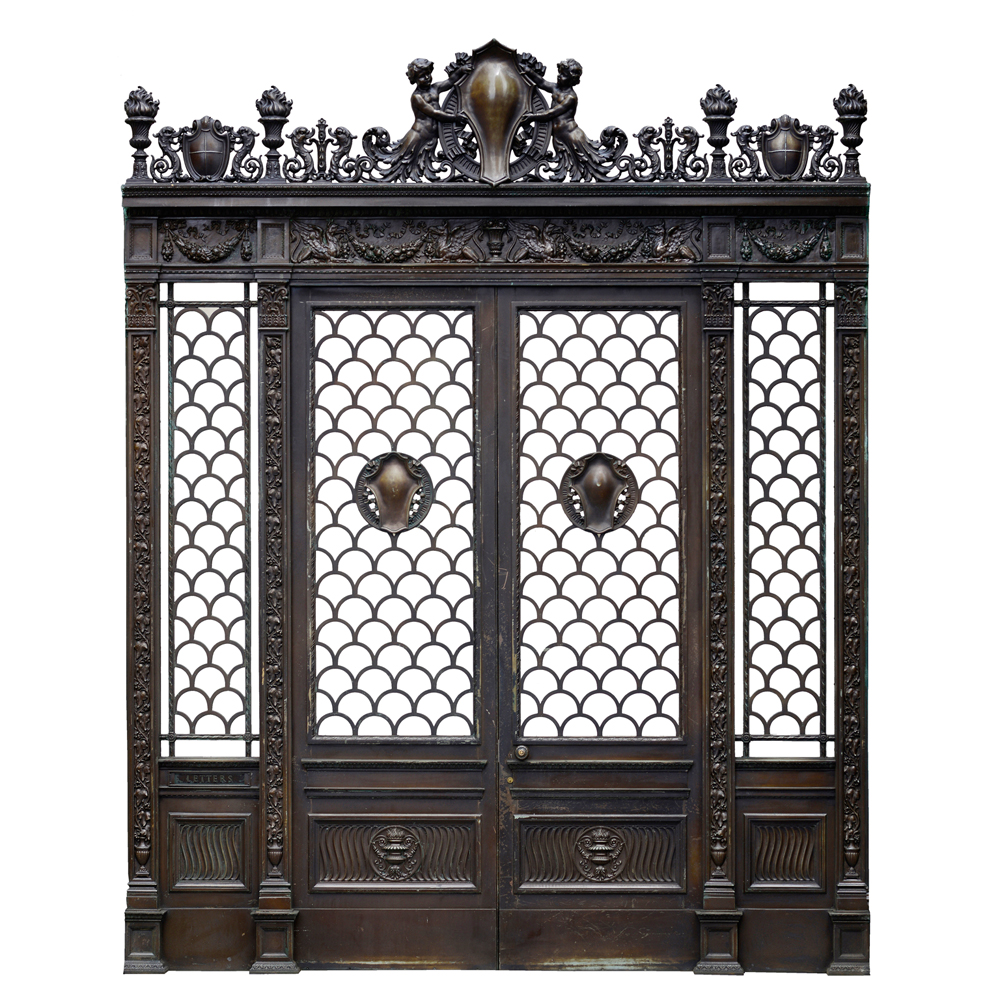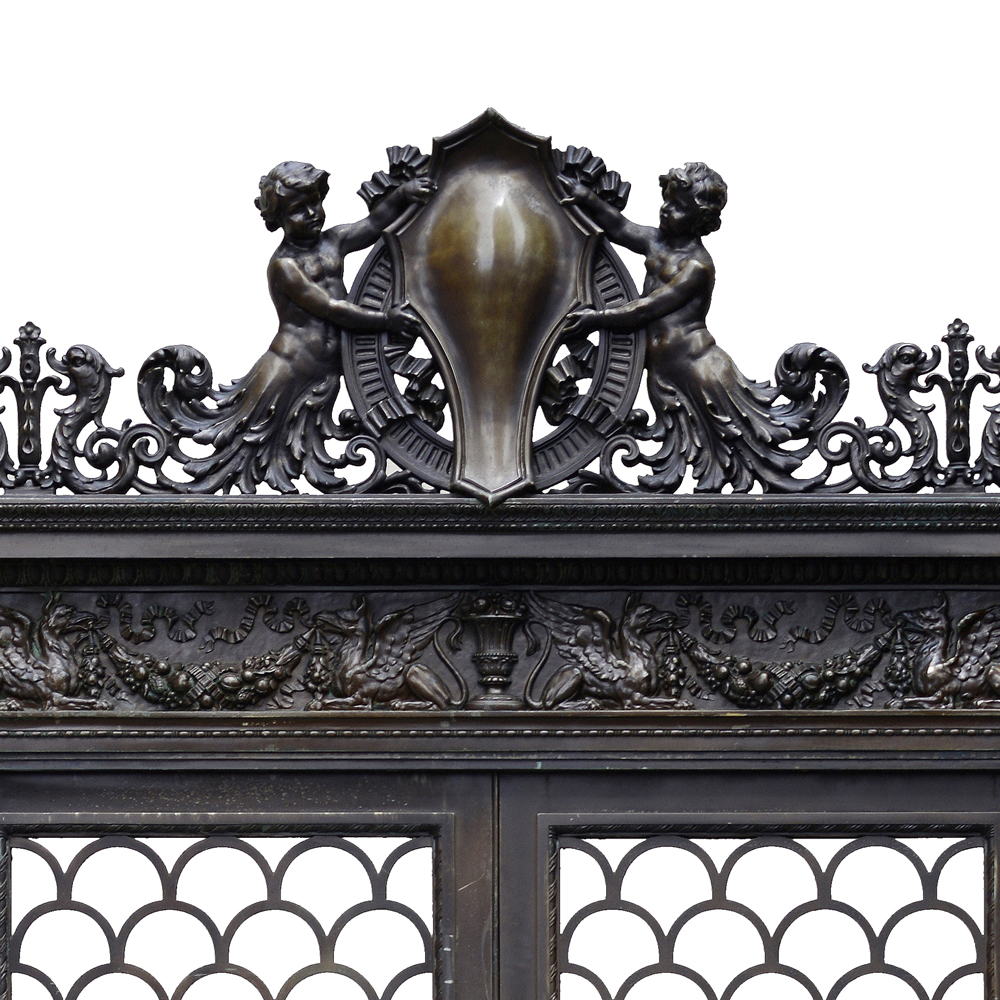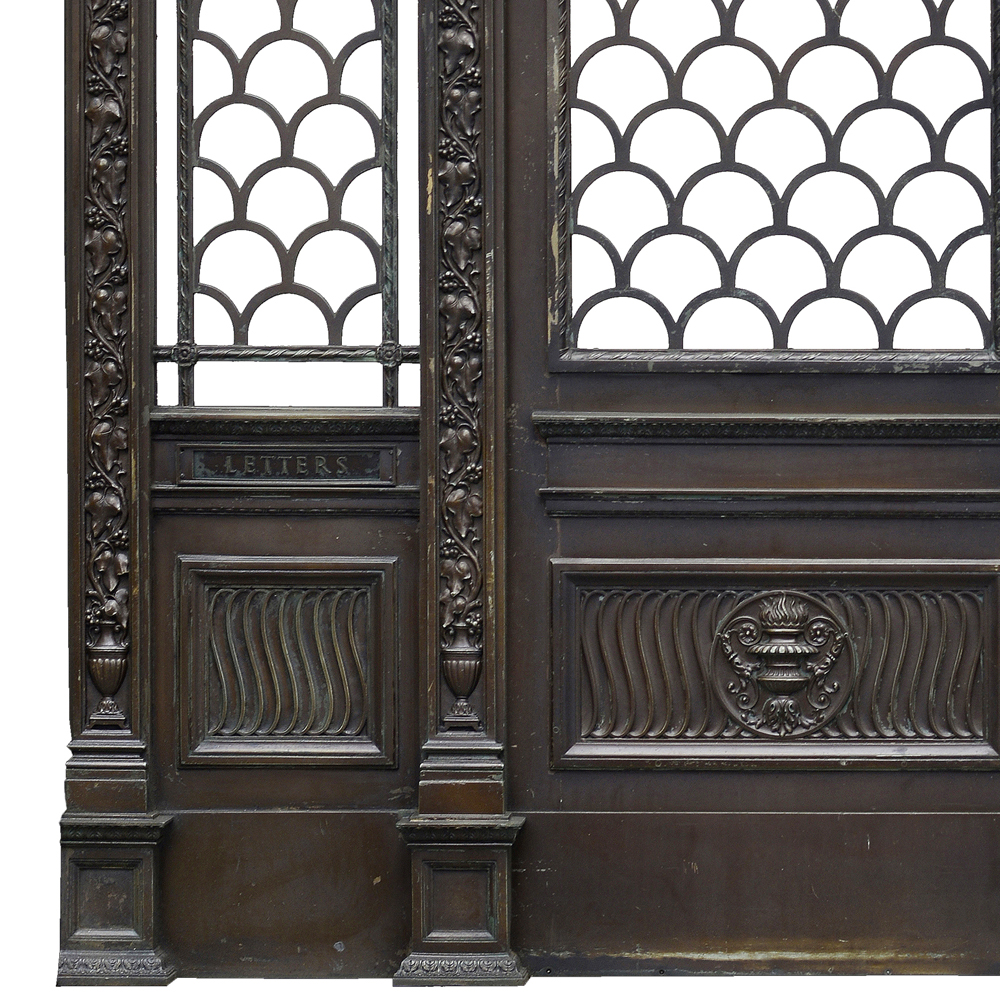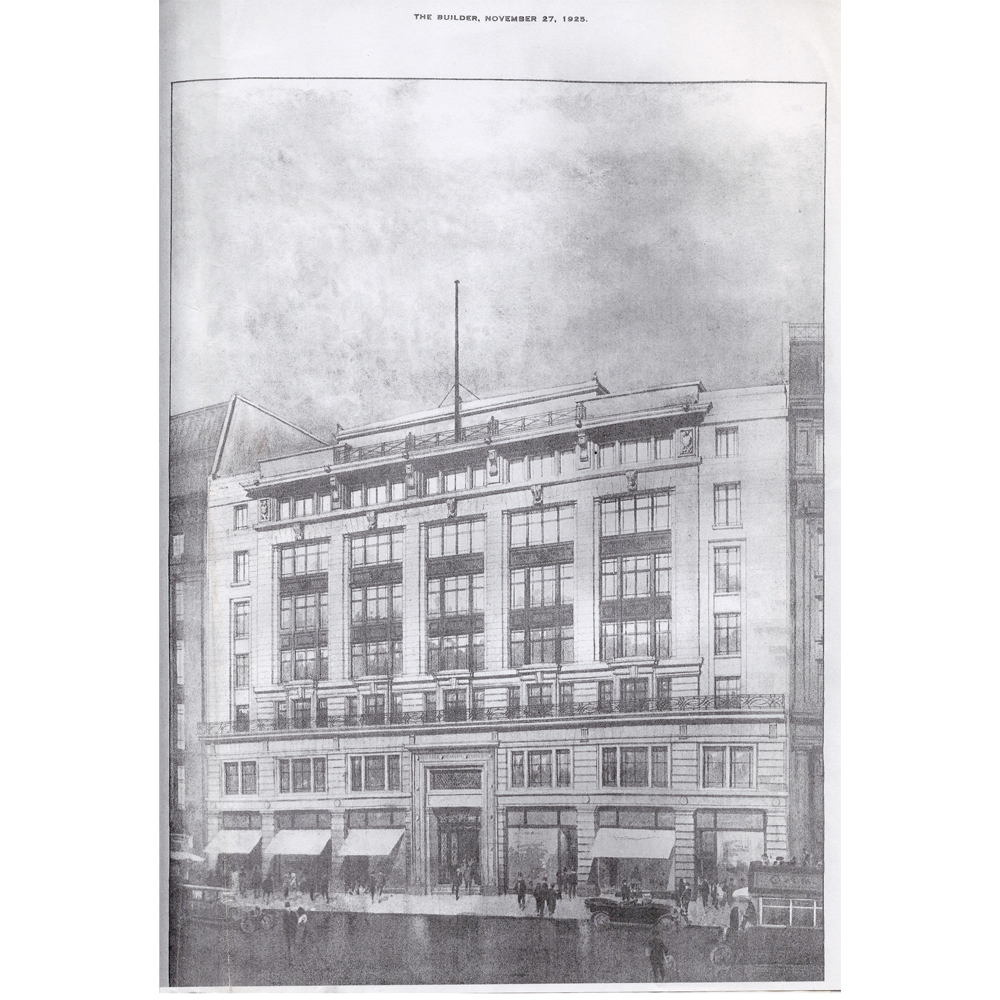No products in the basket.
Archived Stock - This item is no longer available
The Empire House bronze doorway
Circa 1925, cast by H.H. Martyn & Co.
the cresting with a cabochon held by two putti bearers with scrolled acanthus tails, flanked to each side by twin flambeau urns interspersed by scrolling foliage, above a relief cast frieze with central urn flanked by recumbent gryphons supporting swags, above two doors with openwork arcaded trelliswork around central roundels, each cast with a further cabochon, above panels of trailed grapevines cast in recessed relief, on a projecting panel cast plinths, with conforming arcaded trelliswork windows to each side, with further matching pilasters at each side,
SOLD OUT
In stock
Empire House (c.1925) once stood on the old General Post Office site on St. Martin’s-le-Grand, City of London. Designed by the architects, Gunton and Gunton, its footprint spanned some 21,000 square feet, stood at over 80ft high and consisted of nine floors of shops, offices and showrooms. Centred within the imposing Portland Stone façade and enclosing the ‘spacious hall’ stood this 14ft high Bronze doorway, cast by the revered H.H.Martyn & Co. Ltd.
Founded in 1888, the company initially concentrated on ecclesiastical carving but swiftly expanded into joinery, cabinet making, ironwork and metal casting. Such was the quality of their work that Royalty began using their services in the 1890’s which led to a number of other prestigious commissions. During the golden age of the Ocean Liner, Martyn & Co. are said to have ‘executed more complete ship interiors than any other firm in existence’. Companies who employed their services include Cunard, P&O and The White Star Line with them working on vessels such as the Titanic, Empress of Britain, Queen Elizabeth and Queen Mary. Within a decade the company employed over 200 men (increasing to over a thousand by the 1920’s), many of whom were outstanding craftsmen and artists in their own right, and had cemented a reputation for turning out the highest standards of work. The extensive list of distinguished clients includes Windsor Castle, Buckingham Palace, St. Pauls Cathedral, Bank of England and Selfridges.
Central to the prodigious development of the company was their policy of employing the finest craftsmen. H.H.Martyn himself stated, “I do not want to seem boastful for I have personally done little beyond inciting far more clever craftsmen than myself, at any cost to do the best that was in them”. Amongst these was noted sculptor and architect Walter Gilbert, founder of the Bromsgrove Guild of Applied Arts (alongside Louis Weingartner), who in turn poached Arnold Edwards whose experience in the handling and blending of metal was unparalleled. The company had set out to dominate the industry of metal casting (and specifically large scale bronze casting) and from 1920 to 1938 they cast ‘75% of all art metal work required’ in the United Kingdom.
Whilst there is no documentary evidence to confirm Gilbert’s association with the Empire House bronze doorway (Maples of London, who took over the firm in 1934, ordered much of the archive material to be destroyed), it is unlikely that he would not have sculpted such a significant commission for the firm, and there are definite stylistic parallels with his work for Bromsgrove. Amongst other similar pieces executed about that time for the firm by Gilbert were panels and grilles for Kensington department store Derry and Toms (c.1931), numerous items of metalwork for the Unilever building (c.1931, see lot XXX for Bronze and Perspex ceiling lights from the same building), the entrance to the British General Insurance Co. (c.1932, round the corner from Empire House on Cheapside, no longer extant), bronze doors and the astonishing Roll of Honour casket for the Grand Temple Freemasons’ Hall, Great Queen Street c.1933, doors to the first class restaurant on the Queen Mary (now in Long Beach California), bronze doors for the HQ of the Anglo-American corporation in Johannesburg, South Africa and bronze doors for St. Andrew’s House, Regent Road, Edinburgh (c.1936).




